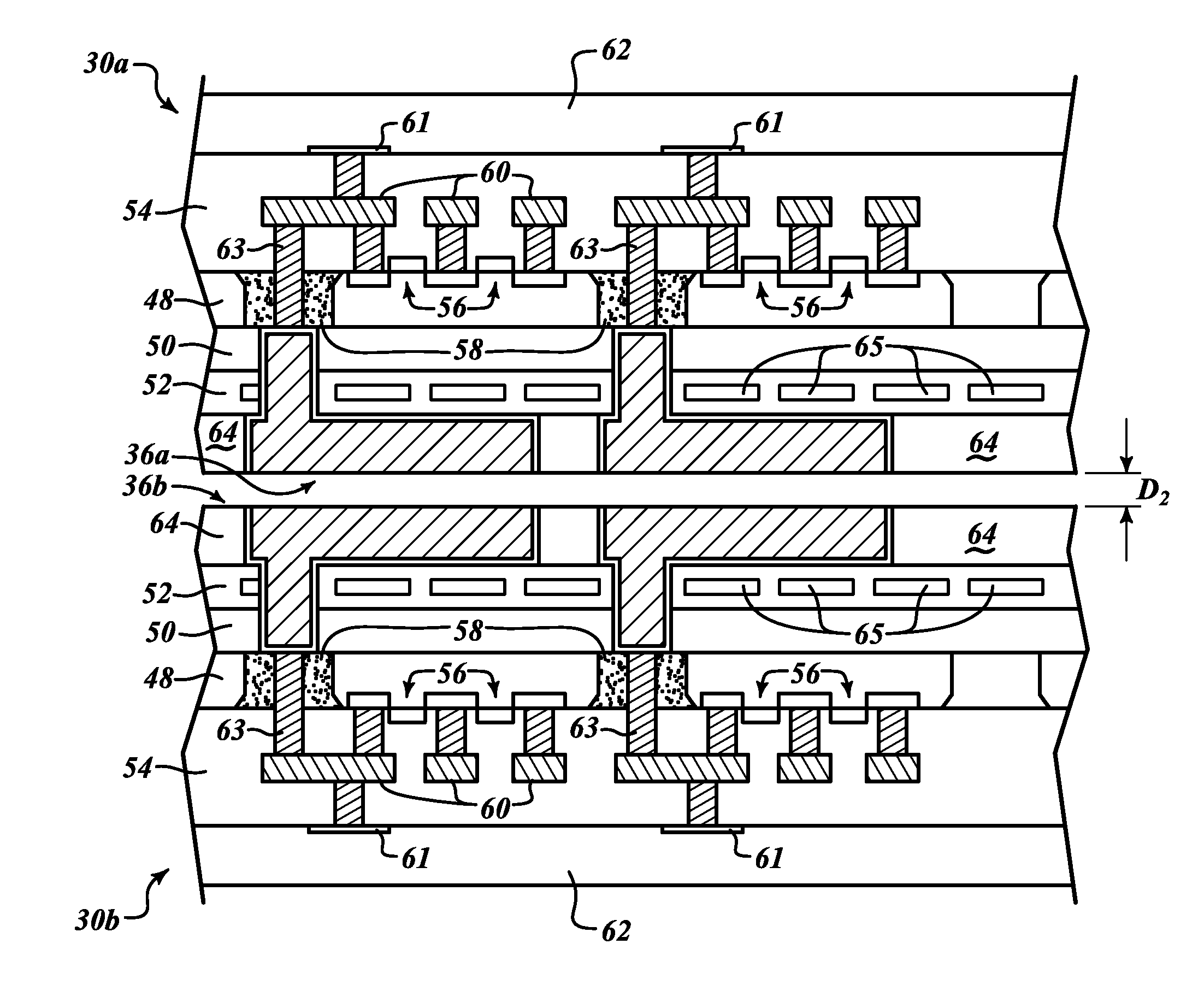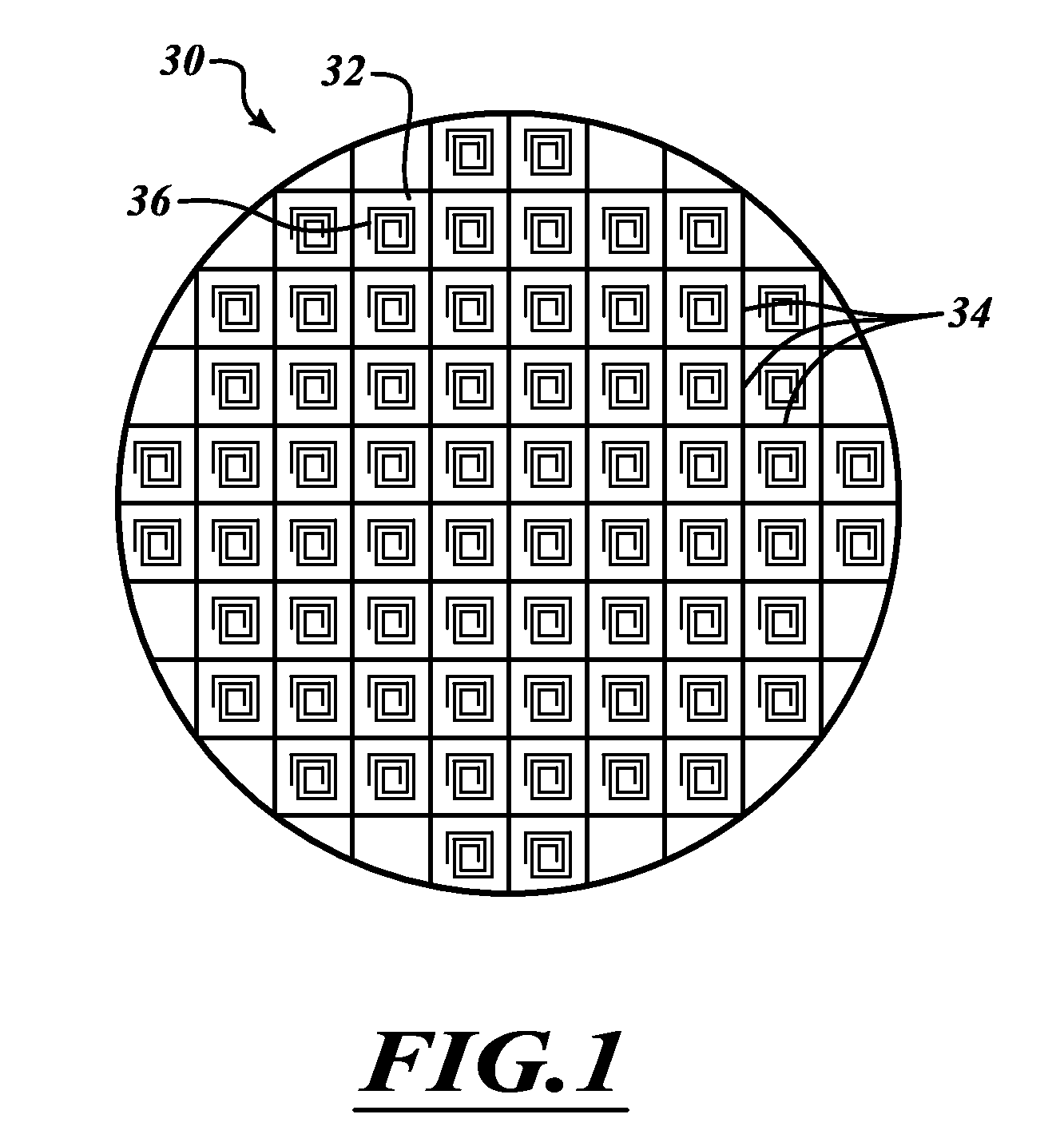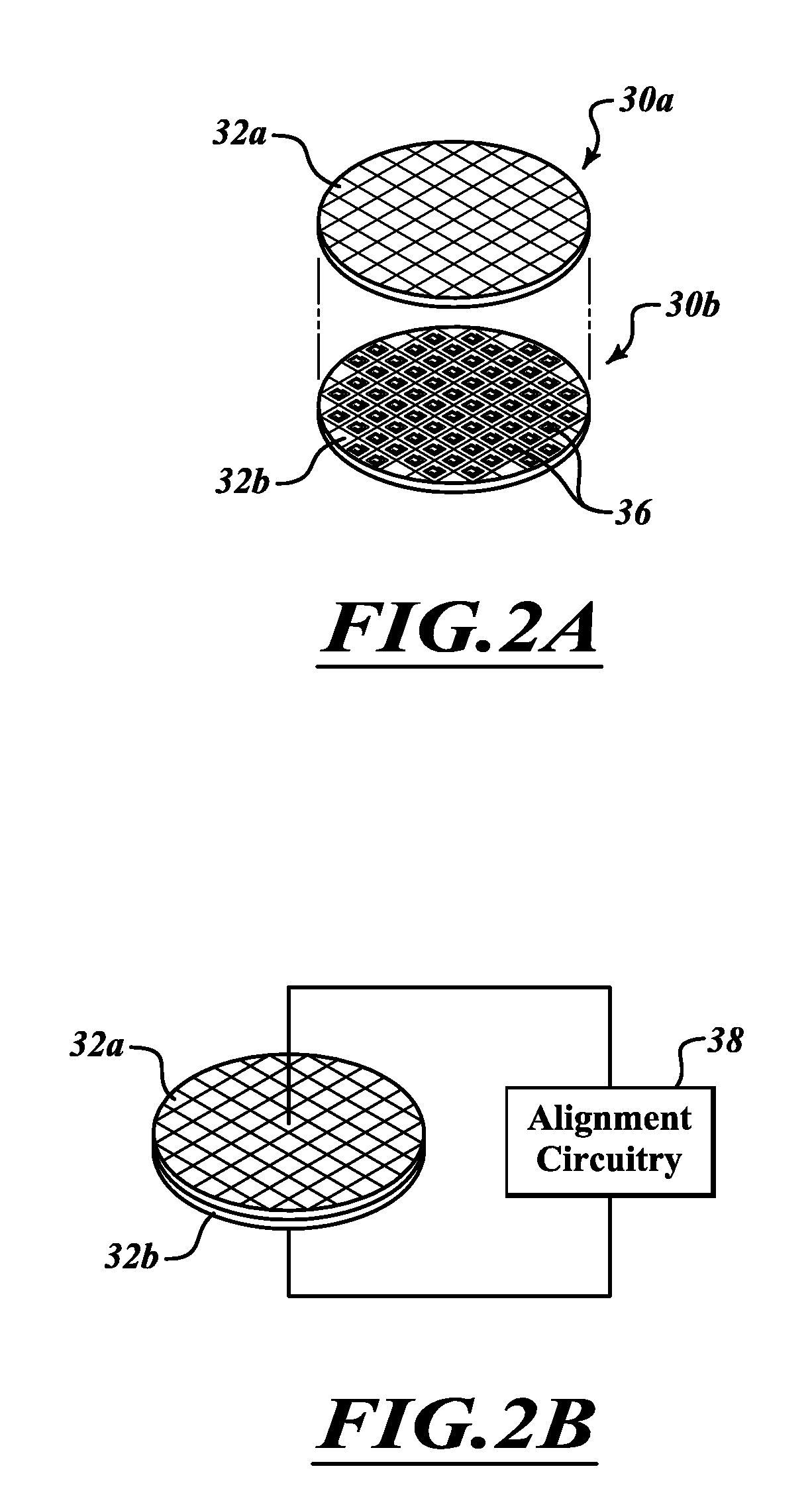Using backside passive elements for multilevel 3D wafers alignment applications
a passive element and alignment technology, applied in semiconductor/solid-state device testing/measurement, semiconductor device details, semiconductor/solid-state device testing/measurement, etc., can solve the problems of significant integration challenges of manufactures of different semiconductor technologies, and achieve the effect of improving density and performan
- Summary
- Abstract
- Description
- Claims
- Application Information
AI Technical Summary
Benefits of technology
Problems solved by technology
Method used
Image
Examples
Embodiment Construction
[0025]FIG. 1 is a top view of an integrated circuit wafer 30 according to one embodiment. In one embodiment, this is the back side of the wafer. The integrated circuit wafer 30 includes a plurality of individual integrated circuit dies 32. The integrated circuit dies 32 are separated from each other by scribe lines 34 in a grid pattern on the integrated circuit wafer 30. Each integrated circuit die 32 includes a passive circuit element 36 formed on or near a back surface of the integrated circuit wafer 30. Each integrated circuit die 32 includes an integrated circuit formed on a front surface of a semiconductor layer of the integrated circuit wafer 30. All of the integrated circuit dies 32 are processed simultaneously on the wafer 30.
[0026]After processing of the integrated circuit wafer 30, the integrated circuit wafer 30 will be diced into individual integrated circuit dies 32 by sawing or dicing along the scribe lines 34.
[0027]In some uses multiple integrated circuit wafers 30 ar...
PUM
 Login to View More
Login to View More Abstract
Description
Claims
Application Information
 Login to View More
Login to View More - R&D
- Intellectual Property
- Life Sciences
- Materials
- Tech Scout
- Unparalleled Data Quality
- Higher Quality Content
- 60% Fewer Hallucinations
Browse by: Latest US Patents, China's latest patents, Technical Efficacy Thesaurus, Application Domain, Technology Topic, Popular Technical Reports.
© 2025 PatSnap. All rights reserved.Legal|Privacy policy|Modern Slavery Act Transparency Statement|Sitemap|About US| Contact US: help@patsnap.com



